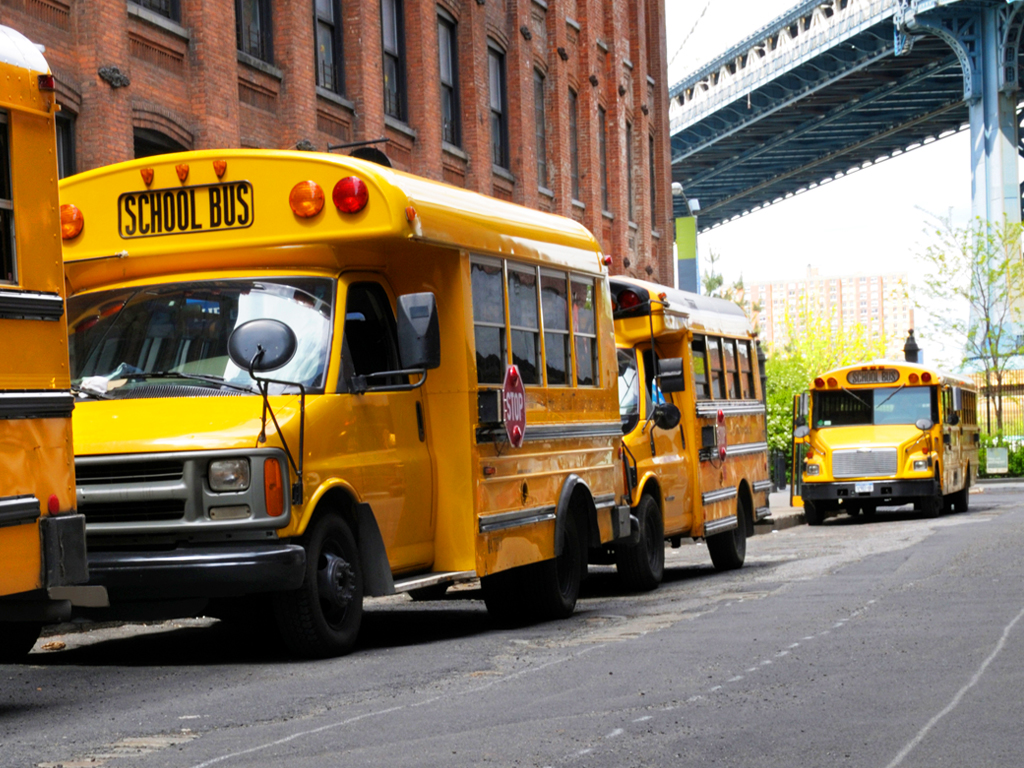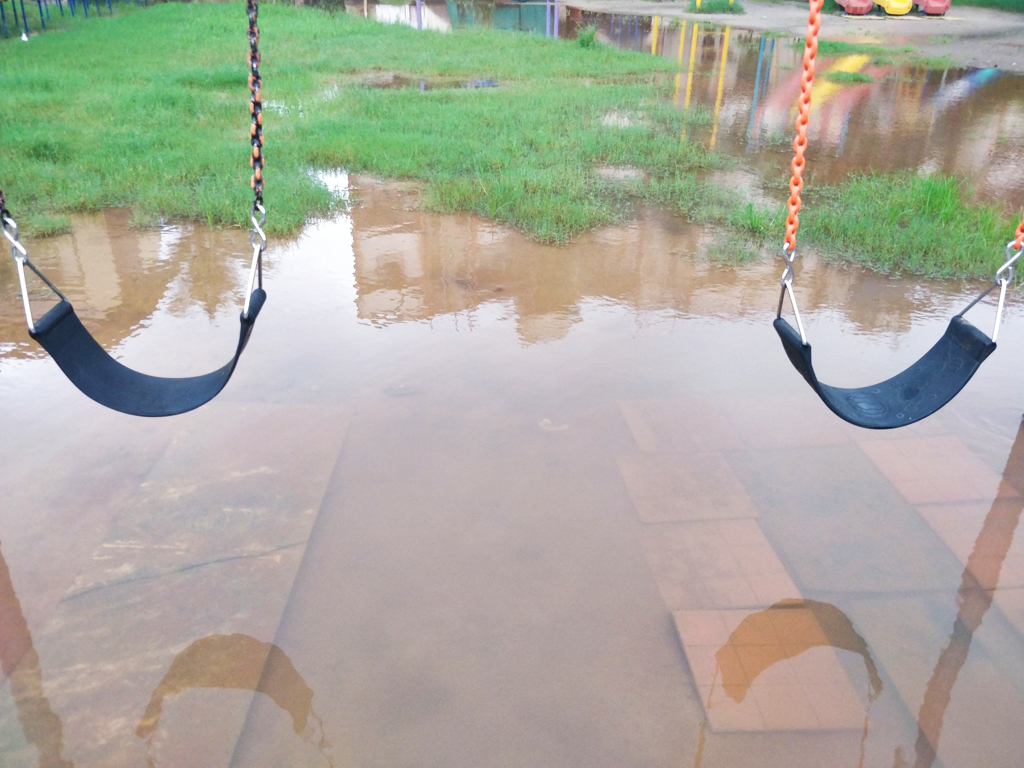COVID-19 has made it apparent that our schools need indoor air quality improvements. School air quality is of particular importance because of how susceptible students are to airborne contaminants compared with adults, and how this susceptibility impacts their long-and-short-term academic, physical, mental, financial, and social well-being. In this 4-part series, we will explain the situation in our schools and what school districts can do about it.
In Part 1, we discussed how poor indoor air quality (IAQ) negatively impacts schools. This is Part 2: External and Financial Considerations. This article will discuss how external environmental factors and financial factors affect the air quality in schools and suggest several practical adaptations for each.
External Environmental Factors
School districts have limited control over the external environment, but they can adapt to it. In this section, we will discuss how the external environment affects air quality, and what your school district can do about it.
External Environmental Considerations
One crucial influence on your indoor air is the outdoor air. Outdoor pollutants infiltrate buildings via the opening of windows and doors, poorly maintained HVAC systems, or simply through cracks and crevices that exist in even the best-sealed buildings. A UNESCO paper gives some examples:
CO2 can also arise from outside the school, being widely produced by the combustion of fossils or road traffic. Anthropogenic activities are responsible for the emission of nitrogen dioxide (NO2) and polycyclic aromatic hydrocarbons (PAH) too, which represent other possible external contaminants potentially impairing IAQ.[...Also], particulate matter (PM2.5 and PM10) originating from road traffic, domestic heating or industrial activities represent additional possible contaminants impacting schools’ air quality.1
This infiltration of outdoor contaminants is bad news for your students. Like indoor contaminants, outdoor infiltration is linked to absenteeism, lower grade point averages, and poorer student health.2
However, you are not likely to see healthier air outside of your school any time soon. The United Nations projects that 68% of the world will live in cities by 2050. It follows, therefore, that more school districts will be near sources of air pollution such as “busy airports and roadways.”3 These generate particulate matter and a host of other contaminants which can negatively impact schools. For instance, a recent study linked proximity to highways and industrial facilities with poorer student performance.4
Note that the soil chemistry of the area around and under your school can also determine the risk of radon gas accumulating in your school building.5 Radon is a radioactive gas and the leading cause of lung cancer in nonsmokers, and it has been found at dangerously high levels in schools across the country. (As if that wasn't bad enough, radon also can worsen asthma symptoms).
Climate change is also exacerbating poor air quality in schools. According to the United States Geological Survey, “With increasing global surface temperatures the possibility of more droughts and increased intensity of storms will likely occur.”6 As we've discussed in a previous blog, such disasters can exacerbate air pollution. Climate change can also modify the activity of biological pollutants; for instance, climate change has been linked to increased mold and pollen levels in some areas.7 In these ways, the global climate can become a very local air quality factor.
 An increasing number of school districts will be urban districts. (Image credit: Getty / Lisa-Blue)
An increasing number of school districts will be urban districts. (Image credit: Getty / Lisa-Blue)
External Environmental Solutions
You might think that the solution to all this is to better seal your school building against infiltration from the external environment. However, sealing a school building without making other adaptations can worsen indoor air quality. We will discuss that particular dilemma (and its solution) in Part 4. For now, merely note that most considerations related to the external environment require internal infrastructure and policy solutions. However, there are a few solutions we will discuss now because they are directly related to the external environment.
- Radon Mitigation: Radon mitigation is so specialized that it would require a separate article. However, monitoring is always the first step; the EPA recommends following your local state guidelines for radon testing. Please see the EPA's radon landing page for schools and New York State's explanation of different radon mitigation techniques for further resources.
- Tree Walls: Regarding the infiltration of outdoor pollutants, planting tree walls around school buildings may reduce certain contaminants indoors.8 This is because plants catch contaminants in the waxy coating of their leaves. (Please note this does not mean that individual indoor plants improve air quality.) Some literature suggests green spaces may reduce the negative impact of outdoor air pollution on schools,9 through either the reduction of contaminants or by balancing the effects of negative air quality with psychological benefits.
- Sustainability: As for climate change, your school district can't fix everything, but it can do its part to institute sustainable practices. According to an Education Week article, “schools across the country contribute a huge chunk of the harmful emissions that are driving climate change at an increasingly alarming rate.”10 Consider developing a system of best practices for energy efficiency, ordering sustainable supplies, and handling waste. While some improvements—such as converting your fluorescent lights to LEDs—may appear too expensive, the savings which result from green practices often end up paying for themselves. Also, the federal government is currently distributing billions in federal funds for infrastructure improvements to schools (including sustainability improvements). Please see the financial section for more details on this option.
 Pictured: A flooded school playground. Your school district may have to adapt to changing local and global environmental conditions. (Image credit: Getty / HemantMandot).
Pictured: A flooded school playground. Your school district may have to adapt to changing local and global environmental conditions. (Image credit: Getty / HemantMandot).
Financial Factors
Other than advocacy and budget line allocation, schools have limited control over their financial situation. However, several recent federal bills are offering schools a limited window of unprecedented plenty and self-direction. This section will discuss how the financial prosperity of the community the school district serves affects air quality, before discussing new federal funding as a possible solution.
Financial Considerations
Since most of a school's funding comes from local sources, underprivileged and minority communities are more likely to suffer from poor indoor air quality in their schools. Harvard's eBook Foundations for Student Success: How School Buildings Influence Student Health, Thinking, and Performance gives this summary:
Early-childhood education programs and schools in poorer districts often have facilities and indoor environmental quality that are worse than those of other districts (Alexander et al., 2014; Earthman, 2004; Satterlee et al., 2015). Recent research suggests that schools that serve lower socioeconomic communities may also have a larger burden of asthma-related absences (Meng et al., 2012). And as the percentage of students who qualify for reduced-cost lunch increases, the quality of the school building decreases, and non-white and poorer student populations are disproportionately affected (Local 32BJ, 2013; Simons et al., 2010). Teachers working in schools in low-income neighborhoods have been found to report a higher prevalence of mental disorders, poorer psychosocial working conditions (Virtanen et al., 2007), higher rates of symptoms of occupational burnout (Vercambre et al., 2009) and to take more long-term sick leave (Virtanen et al., 2010)[...]Researchers have found that non-white children are more likely than white children to encounter airborne toxins near their schools (Chakraborty & Zandbergen, 2007).11
This does not mean that only poorer school districts suffer from poor air quality. Air quality affects performance and well-being independently of socioeconomic status. However, schools in underprivileged communities are more likely to suffer from poor air quality.
Note that every individual in the school is also a source of air pollution, especially viruses, bacteria, and carbon dioxide. Thus, another budgetary issue—overcrowding—can also exacerbate air quality issues in underserved communities. According to the aforementioned Harvard eBook, “schools have four times more occupants than office buildings in the same amount of floor space.”12
Funding Solutions
 We've got some good news for fiscally-strapped schools. (Image credit: Getty/ SDI Productions).
We've got some good news for fiscally-strapped schools. (Image credit: Getty/ SDI Productions).
Air quality problems connected to the school budget present a perplexing dilemma. Because of the detrimental effects of poor air quality, air quality improvements often end up paying for themselves. However, the schools most likely to be affected by negative air quality don't have the ability to make that investment in the first place.
We have good news (with an important caveat) for struggling school districts. Due to the COVID-19 pandemic, the federal government is currently distributing an unprecedented amount of use-it-or-lose-it funds to schools for the improvement of infrastructure, air quality, academic achievement programs, and sustainability. Many of these funds are being distributed through state education agencies (SEAs), i.e., the department of education in each state/territory These funds have a limited window in which they can be awarded and used. A list of some of these funds is below:
| Fund | Amount | Purpose | SEAs must obligate funds by |
|---|---|---|---|
|
ESSER II
Elementary and Secondary School Emergency Relief (CRRSA) |
$54 billion | “[…]to address the impact that COVID-19 has had, and continues to have, on elementary and secondary schools across the Nation.” | September 30, 2023 |
|
ESSER III
Elementary and Secondary School Emergency Relief (ARP) |
$122 billion | September 30, 2024 | |
|
GEER II
Governor’s Emergency Education Relief Fund (CRRSA) |
$1.3 billion | “[…]awards grants to Governors for the purpose of providing local educational agencies (LEAs), institutions of higher education (IHEs), and other education related entities with emergency assistance as a result of the Novel Coronavirus Disease 2019 (COVID-19).” |
September 30, 2023*
*funds obligated by the governor rather than an SEA |
|
EANS II
Emergency Assistance to Non-Public Schools (CRRSA) |
$2.75 billion | To “provide services or assistance to non-public schools that enroll a significant percentage of low-income students and are most impacted by the qualifying emergency.” | Within 6 months of receiving |
|
EANS III
Emergency Assistance to Non-Public Schools (ARP) |
$2.75 billion | Within 6 months of receiving |
The funds listed above aren't the only ones available. Congress has established separate funds through the Department of Education for schools run by tribal governments and for institutes of higher education. Other funds which can be used for school district IAQ are being made available through the Department of Agriculture, the Department of Energy, FEMA, and the Treasury Department. Overall, the temporary funds available to America's schools amount to several hundred billion dollars! You can see a non-comprehensive overview of funds available via this White House Toolkit.
The caveat is that each fund has its own application, distribution, allocation, and reporting rules. Many school districts lack the staff to apply for/allocate even one new funding program, never mind a dozen. Even school districts that have the staff may have difficulty navigating the different applications and federal departments. On top of that, many of these funds are not direct grants. School districts must first spend the money on IAQ improvements, and then apply to be reimbursed by government funding. This means that in addition to applying for funds, school districts must apply for private financing as well until the reimbursement goes through.
That's where ActivePure comes in. Our air quality experts are happy to offer you guidance on applying for these federal programs and allocating the funds according to the required timeline. We can also help point you towards financing options that have worked for our other customers.
The deadlines for all these programs are coming up quickly. We strongly encourage every school district to take this once-a-century chance to change not only their infrastructure but the physical, mental, and economic well-being of their students for decades to come. Whether or not you want ActivePure's help applying for this funding (and we can help), it would be a shame to see you miss it.
To be continued…
In our next 2 installments, we'll discuss how school district policy and school building infrastructure impair or improve indoor air quality. We'll also provide additional solutions and suggestions related to these factors.
1 Pulimeno, M. (2020). “Indoor air quality at school and students' performance: Recommendations of the UNESCO Chair on Health Education and Sustainable Development & the Italian Society of Environmental Medicine (SIMA).” Health Promotion Perspectives. 2020 Jul 12;10(3):169-174. doi: 10.34172/hpp.2020.29. PMID: 32802752; PMCID: PMC7420173.
https://ncbi.nlm.nih.gov/pmc/articles/PMC7420173/
2 Eitland, E., et al. (2021). Foundations for Student Success: How School Buildings Influence Student Health, Thinking, and Performance. Harvard T.H. Chan School of Public Health, Harvard Center for Health and Globally Environment, Healthy Buildings Program.
https://forhealth.org/Harvard.Schools_For_Health.Foundations_for_Student_Success.pdf
3 Foundations, p. 31
4 Kweon B-S., et al. "Proximity of public schools to major highways and industrial facilities, and students’ school performance and health hazards." Environment and Planning B: Urban Analytics and City Science. 2018;45(2):312-329. doi:10.1177/0265813516673060, P. 5
5 Environmental Protection Agency. (2022). “What is Radon?” https://www.epa.gov/radon/what-radon
6 United States Geological Survey. (2022). “How can climate change affect natural disasters?”
https://www.usgs.gov/faqs/how-can-climate-change-affect-natural-disasters
7 Paudel, B., Chu, T., Chen, M. et al. Increased duration of pollen and mold exposure are linked to climate change. Sci Rep 11, 12816 (2021). https://www.nature.com/articles/s41598-021-92178-z
8 Gibbens, S. (2019). “Which houseplants should you buy to purify the air? None of them.” National Geographic. https://www.nationalgeographic.com/science/article/houseplants-dont-purify-indoor-air
9 Foundations, p. 29
10 Lieberman, M. (2022). “‘It Has to Be a Priority': Why Schools Can’t Ignore the Climate Crisis.” https://www.edweek.org/leadership/it-has-to-be-a-priority-why-schools-cant-ignore-the-climate-crisis/2022/05
11 Foundations, p. 29
12 Foundations, p. 7



